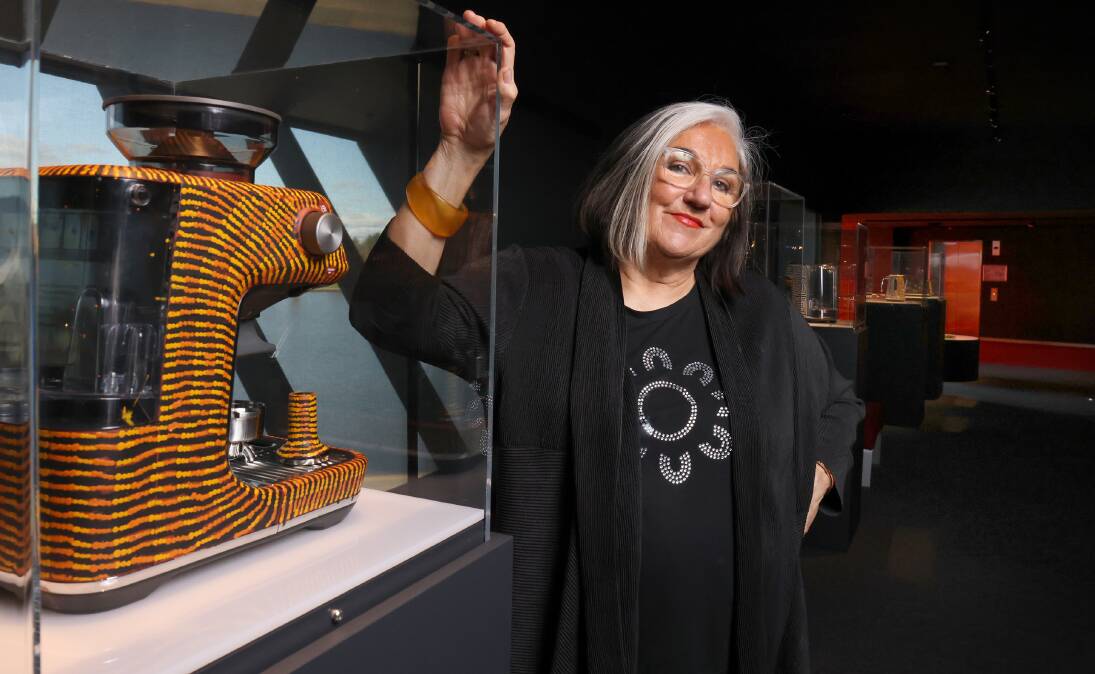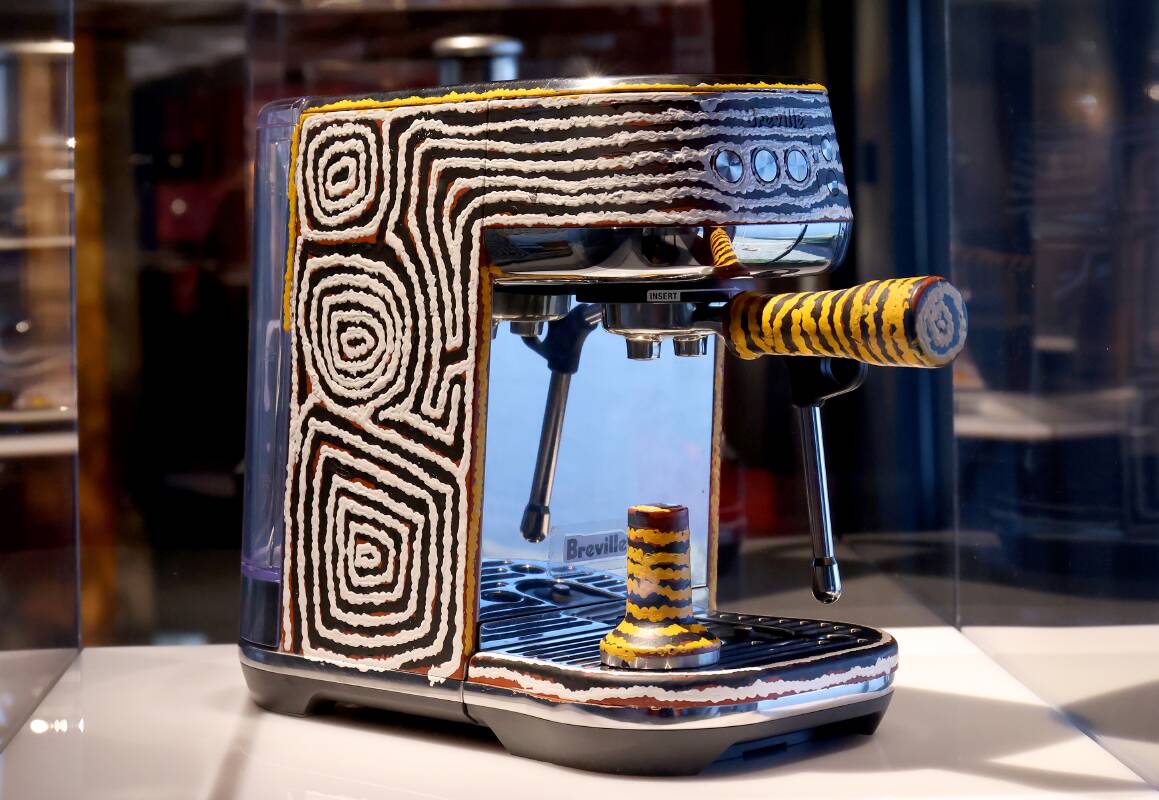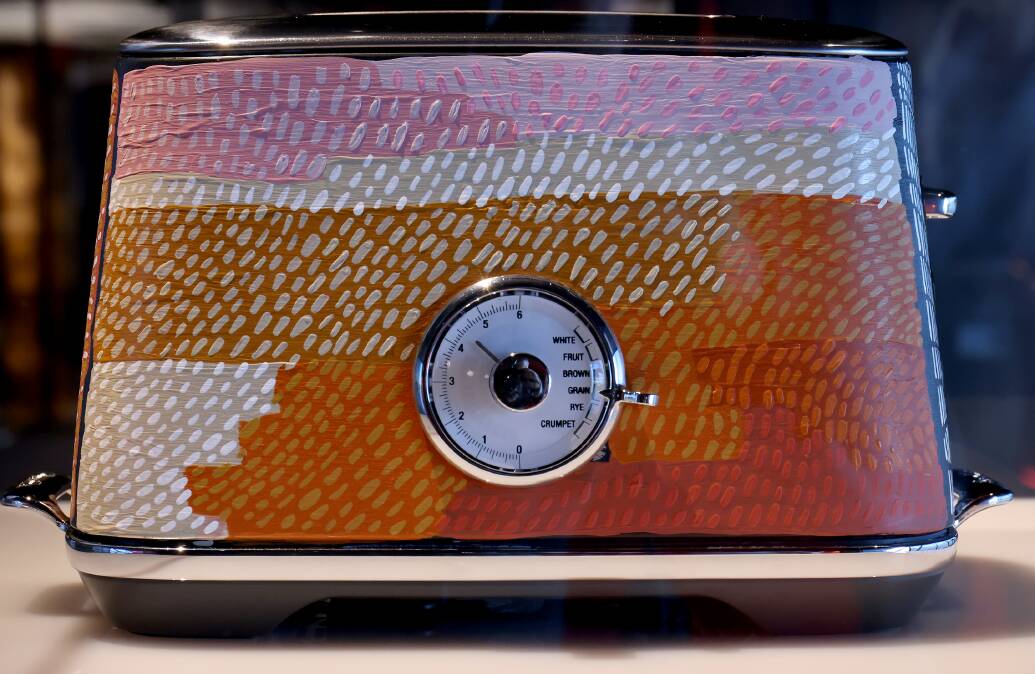
It's not unusual to have toasters and coffee machines on the brain when it comes to weddings.
But when designer Alison Page found herself at a wedding in Western Australia in 2006, there was one guest she was particularly excited to meet.
The new head designer for Australian kitchen appliance brand Breville, Richard Hoare, soon found himself deep in conversation with Page about the possibility of incorporating Aboriginal design principles into a range of appliances.

"We swapped numbers, we exchanged a few emails, I did a few drawings, and we had few ideas, but for whatever reason, it just didn't happen back then," Page says.
Some 13 years later, Page, by now a well-known advocate for contemporary Aboriginal design in Australia, received a call.
It was Hoare, and he finally had a proposal - an art project to mark the company's 90th anniversary, and celebrate 65,000 years of ongoing indigenous art culture.
Page, a Wadi Wadi and Walbanga woman, is also part of the National Museum of Australia's Indigenous Reference Group, and it wasn't long before the museum had teamed up with Breville and a group of Aboriginal artists.
The artists - three of whom are from the original Pintupi Nine group who lived as traditional hunter-gatherers until the mid-1980s - painted a range of modern Breville kitchen objects, including a kettle, toaster, juicer and coffee maker.
The project was overseen by Terri Janke, an international authority on Indigenous cultural and intellectual property, and all money from the limited edition range will go to the National Indigenous Culinary Institute of Australia.
The range is also on display at the museum as part of a new exhibition of Indigenous hunting and cooking tools.
And rather than being a cynical branding exercise, it's a show Page says makes perfect sense from a historical and design perspective.

"It's like a homecoming for [Breville] - it's them saying, 'Well, if there is this history of 65,000 years of Australian design, and Aboriginal people are the instigators of that design and that design is sustainable, it's etched in story, it's about country, then as an Australian design company, we are at the other end of that continuum'," she said.
"It's scary territory for any corporate to go into ... They said, 'OK, Alison, we want to do this with the most respect possible. The most beauty as possible - we really want to draw stories about sustainability and sustainable land management'."
Thus the toaster and oven are about the hearth and home, the kettle is welcoming, the juicer alludes to the fruit of the land, and the coffee machine is about ritual.
They're on display alongside coolamons associated with gathering grains and seeds, scoops used for digging and carrying foodstuffs, kelp water carriers, stone knives, fire sticks, grinding stones and boomerangs.
The head of the museum's Indigenous Knowledges Centre and senior Indigenous curator Margo Neale said the collaboration was a significant one.
"It's part of an ongoing project, the concept of being a partnership rather than just a one-off sponsor," she said.
"It's a win-win, where [the artists] get any proceeds, Breville get the brand positioning as Australian, and they're acknowledging the first peoples of the country of Australia."
Page said the project would open more doors for Aboriginal design around the world.
"I really feel like Breville have shown a lot of cultural leadership in this space, about how this could be done," Page said.
"We are called the oldest living culture on earth, and this is going to put some real weight behind that word 'living' because in our practice, we went from painting in the sand, we went from painting on our bodies, we then moved on to canvases in the 70s, Aboriginal art kind of exploded across the world, but it was nothing for us to move from that space into our objects.
"We see all of our artefacts like we see country, it's like a living thing. We don't have inanimate objects. All of our objects carry that spiritual potency that a boomerang would."
- An Aboriginal Culinary Journey: Designed for Living is now showing at the National Museum of Australia, and will tour internationally later this year. nma.gov.au







